ASCE 7 Wind on Stacks and Similar

This article will explain how to calculate wind loads per ASCE 7 on stacks/chimneys and similar structures. ASCE 7-16, Chapter 29 covers “Other Structures”. This is a very broad section that covers a lot of different types of structures. Even if you don’t design stacks/chimneys, it is possible that other types of structures you design could fall under this same design procedure.
What Types of Structures are Covered?
ASCE 7-16 Figure 29.4-1 indicates that it covers chimneys, tanks and similiar structures. Since most chimneys and tanks are cylindrical, this would imply that it only applies to round structures; however, if you look at Fig 29.4-1 then you see that it covers more than just round structures, there are also shape factors for square, hexagonal and octagonal structures. There are many times when a structure may not fit into any other classification within ASCE 7, and this “Chimney” section may be the best option. At Meca, we have applied this criteria to wind load calculations for Air Cooled Heat Exchangers, heaters, and various other structures.
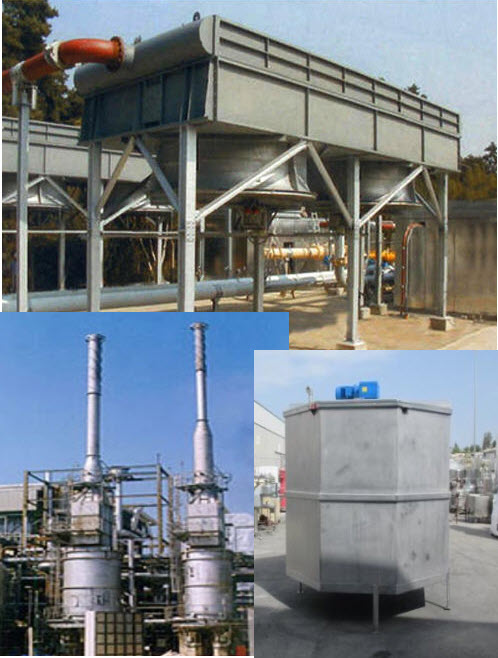
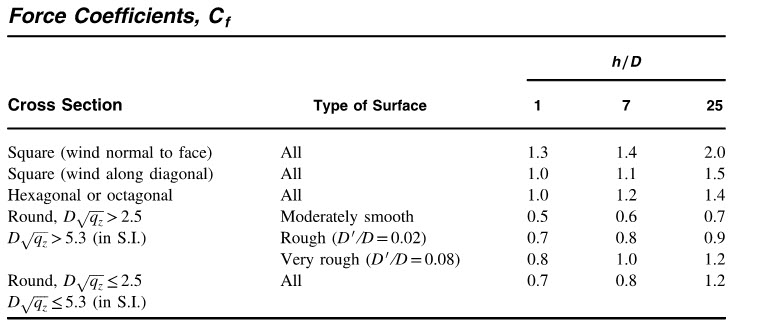
Stack Wind Load Example:
Since Sect 29.4 is written for chimneys, lets work an example of a cylindrical chimney. Assume that we have a 100 ft [30.48 m] overall height chimney that is 3 ft [0.914 m] OD at the top, and 5 ft [1.524 m] at the bottom. There is a conical transition from elevation 55 ft [16.764 m] to 50 ft [15.24 m]. The material is A-36 and the thickness of the stack is 0.25 in [6.35 mm], both of which would be needed to determine the natural frequency.
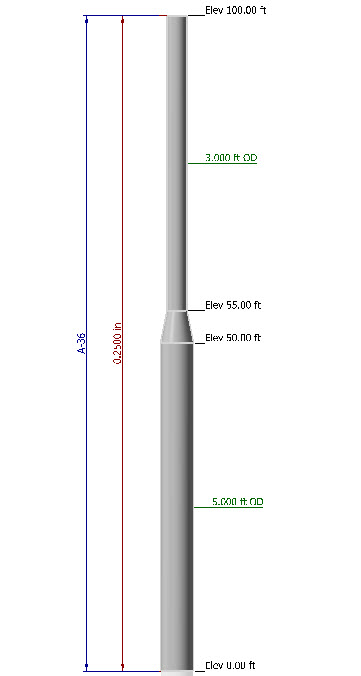
Natural Frequency:
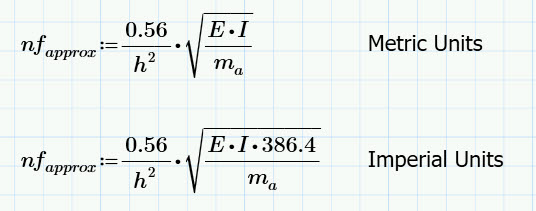
h = Stack Height in ft [m]
E = Modulus of Elasticity in psi [Pa]
I = Moment of Inertia in in^4 [m^4]
ma = Average mass per unit length of stack in lbm/in [kg/m]
Note the 386.4 is only needed for Imperial units in order to resolve the units correctly.
In this case running MecaStack indicates that the natural frequency is 1.84 Hz for this stack. Using this formula and the base diameter of the stack to determine I and ma, we get an estimated frequency of 1.64 Hz. This is about 11% lower than the actual value of 1.84 Hz, but it’s not a horrible estimate. Please note that even though the units below are Imperial, we do not show the 386.4 factor indicated above for Imperial units, because MathCad will automatically adjust the units accordingly.
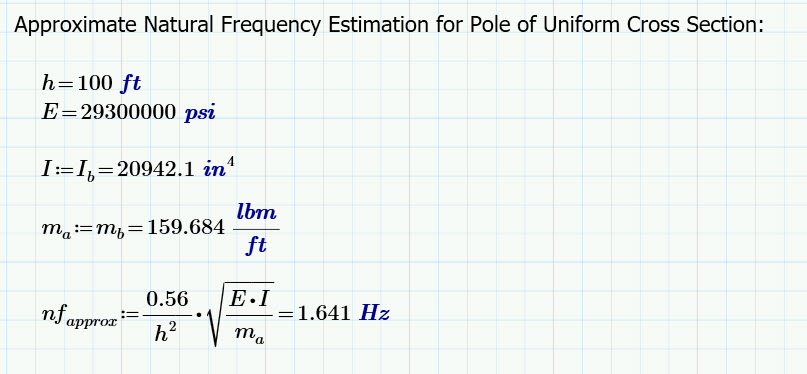
Flexible Gust Factor:
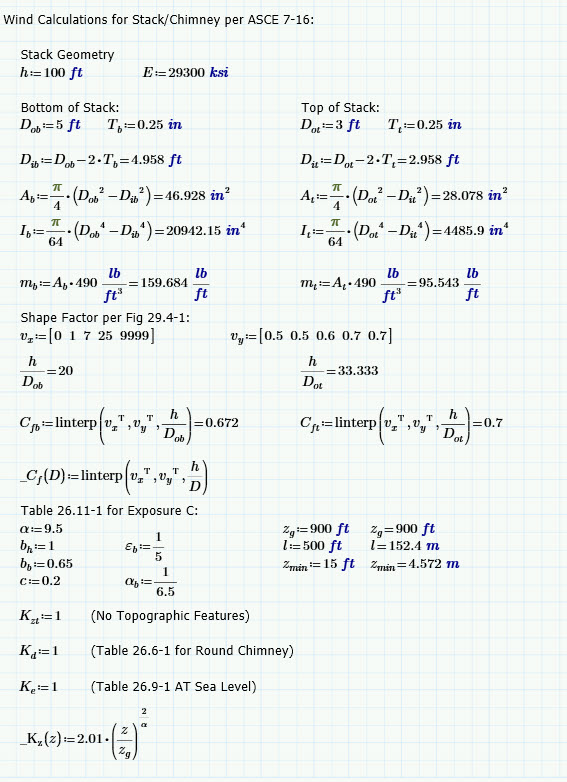
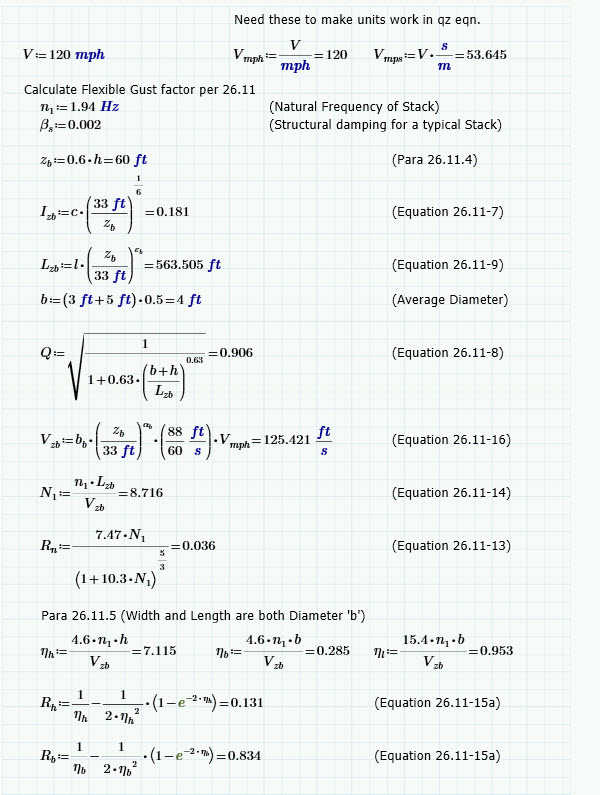
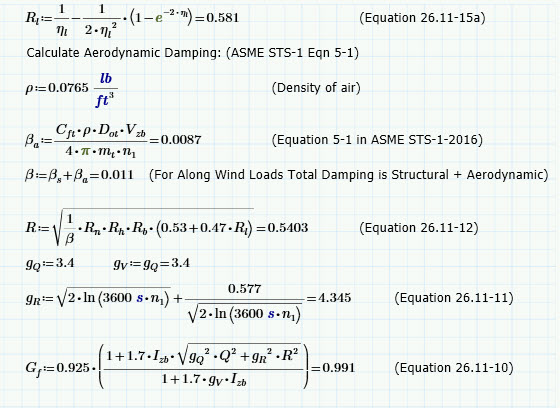
Wind Force Calculation:
Now that we have the flexible gust factor, the rest of the wind force calculations are somewhat easy. We will use Equation 29.4-1 for this calculation.
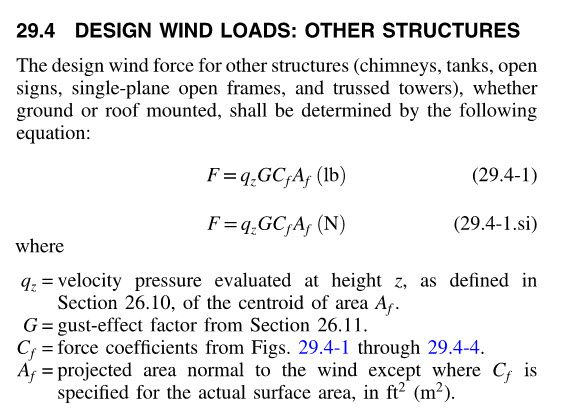
We already calculated the gust factor, G, above, and so now we only need to determine qz, Cf, and Af. The determination of these values, and then the final calculation of F is as follows. Please note that we have calculated these at several different values of z along the height of the stack. Since the Kz factor changes at different elevations, we calculate the wind pressures at more elevations in order to give a more accurate wind loading on the overall stack.
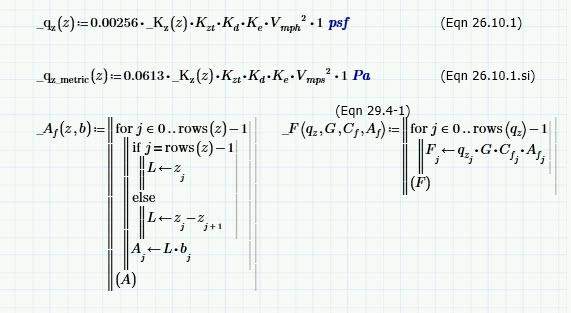
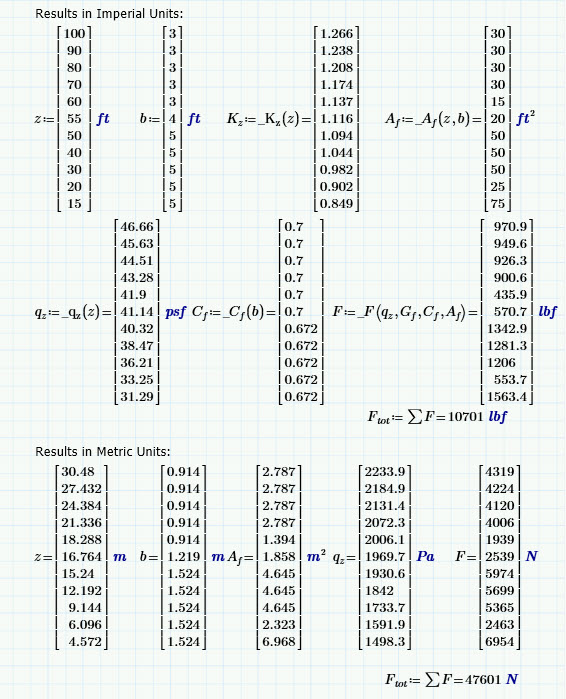
An excel spreadsheet with a summary of the wind pressure calculations is available for free download at this link. There is also a free pdf of the calculations shown in this article at this link.
Can MecaStack do this Calculation?
Yes, MecaStack handles this calculation easily. The flexible gust factor can be involved and for most realistic stack/chimney arrangements the rule of thumb presented is probably not going to be accurate. The easier way to do this stack would be with MecaStack, which would calculate the natural frequency and wind loads. Here are the wind calculations produced by MecaStack for this same example, and here is a copy of the input file which can be opened if you have a license to MecaStack.
Can MecaWind do this Calculation?
MecaWind can be used, but it’s got some issues with this particular example. Within MecaWind we only have the approximate method to estimate the frequency. For example, if we use this tool, we get 1.64 Hz, which is exactly what we got when we performed our manual calculation earlier.
The problem is that the software is written to follow ASCE 7, and in ASCE 7 it states that if the frequency is greater than 1 Hz then the structure is rigid, and the rigid gust factor is used. In order to use the flexible gust factor we would have to enter it in the “Override the Gust Factor”. This isn’t ideal because in order to override you would first have to calculate it by hand and we want the software to do that. We will consider adding this capability in the future, but at the time of this article being published, the capability doesn’t exist.
For the purposes of this example, since we already know the natural frequency is 1.84 hz, that is the value that has been used in the MecaWind analysis. We also forced “G” to equal 0.991 to match our previous calculations. Here is the output for MecaWind, and also the MecaWind input file which you can open if you have a licensed copy of MecaWind.
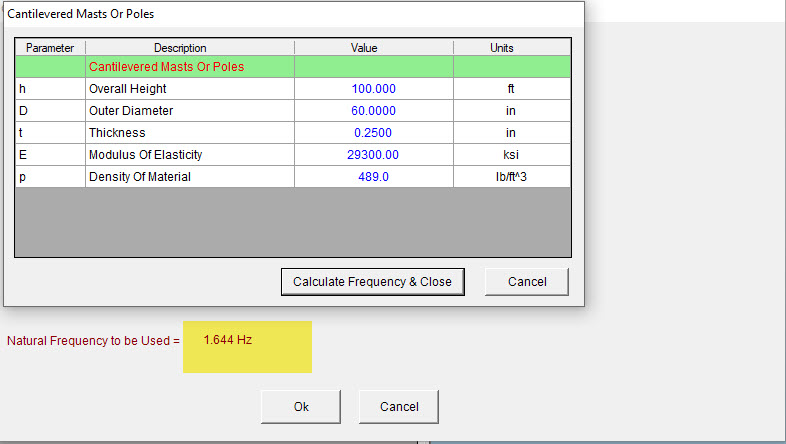
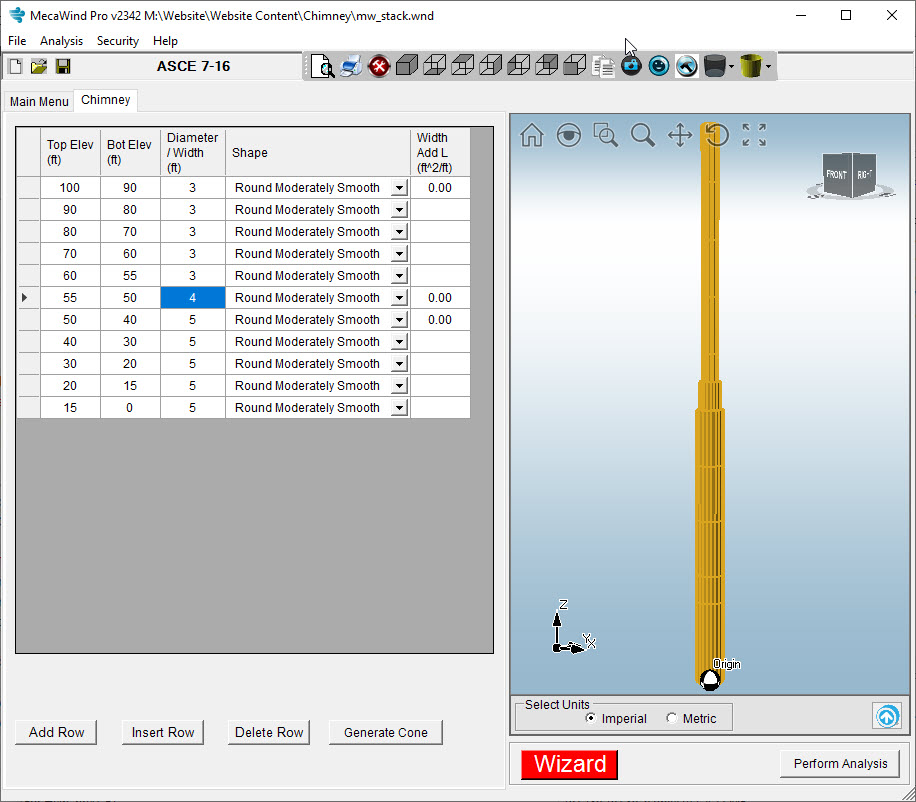
Similar Structures
This procedure can be applied to other “Similar Structures”. The same basic procedure followed here would apply, except that if the structure is not flexible then the much simpler rigid gust factor (G = 0.85) can be used. In ASCE 7, it also mentions that structures in Petrochemical and Other Industrial facilities that are not otherwise addressed in ASCE 7 can be found in the “Wind Loads for Petrochemical and Other Industrial Facilities” which is published by ASCE. If you design structures found in these facilities, this can be a useful reference. It is available at www.asce.org, here is the link. The guide discusses open frame structures, partially cladded structures, pressure vessels, cooling towers, and air cooled heat exchangers.
